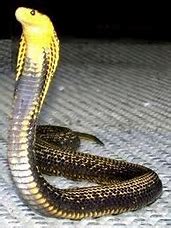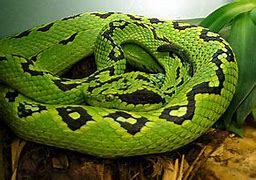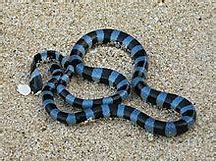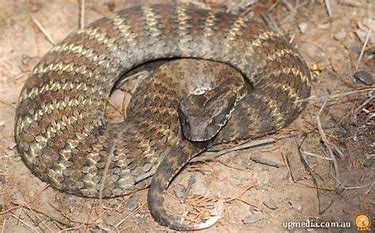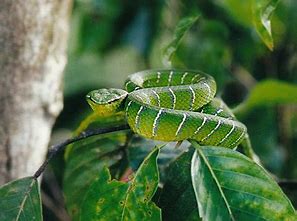SNAKES
NON-VENOMOUS
SO: How do you tell a NON-Venomous snake from a Venomous one:
- For the most part, in the U.S. they have round pupils
- They have rounded heads
- They have teeth that generally curve backwards
- They are generally constrictors
- They do not have heat pits
The below charts should help you:
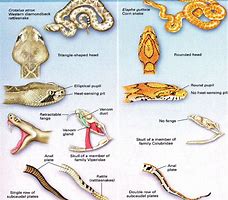

VENOMOUS
- For the most part, in the U.S. they have "cat eyes"
- They have triangular heads
- They have fangs that generally curve backwards
- They are not constrictors
- They have heat pits below their nose to sense heat
The below charts should help you:
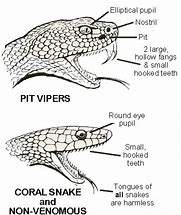
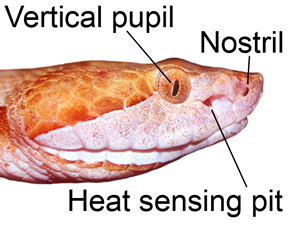
Some More General Facts About Snakes
They are able to live in a wide range of habitats, including deserts, water or wetlands. They can live on the ground or under it, in trees and when available will move into houses. All of them are carnivores which means they eat other living things. They all feature a tongue that is forked which allows them to pick up scent all around them.
They all have vertebrae and ribs that they use for movement. This helps them to get around since they don’t have limbs. They also don’t have external ears or eyelids. They rely on vibration and tasting the air to help them find out what is around them. They also use what vision they have combined with smell to find out about dangers.
Most species are not aggressive. They will usually retreat from any forms of danger that they may detect. However, if they feel threatened they will strike in order to protect themselves.
Snakes are isolated creatures. They do den up when winter comes and leave when it warms up. They do come into contact with each other when hunting for food and during mating season. The males will fight each other sometimes for the right to mate.
All Non-Venomous snakes are considered constrictors. This means that the snake grabs it's food and pulls the animal into itself. It then begins to coil around it squeezing tighter and tighter. Each time the food item exhales the snake squeezes harder, thus not allowing the prey to breath. In essence, the prey item suffocates.
Believe it or not, some snakes can "poop" on demand. They do this to make themselves smelly so predators will not eat them. They also do this when humans pick them up or try and catch them.
Evolution of Snakes
The origin of reptiles goes back somewhere between 310 and 320 million years ago in the swamps of the late Carboniferous period. They first evolved from advanced reptiliomorphs.
The oldest known animal may have been from the fossil strata of Nova Scotia dated to 315 million years ago. They show typical reptilian toes and imprints of scales. These tracks are attributed to Hylonomus, the oldest unquestionable reptile known. It was a small, lizard-like animal, about 7.9 to 11.8 in long, with numerous sharp teeth indicating an insectivorous diet.
From this point forward, reptiles dominated communities and had a greater diversity than primitive tetrapods, setting the stage for the Mesozoic (known as the Age of Reptiles.
The evolution of snakes is fascinating. The fossil remains found are low in number. They are fragile and so they often aren’t able to be well persevered. There have been some found in Africa and South America though. The oldest ones are 125 million years old.
The longest fossil that has been found is 49 feet long. That is almost twice the size of the largest snakes we have today. This means that the snakes were once much larger than they are now. We don’t have answers about what occurred that resulted in them getting smaller.
Some experts believe it had to do with a lack of food in their natural habitat. Plus, when they moved to land and out of the water they didn’t have to move all the time. They were able to conserve energy. This resulted in them eating less and still having enough energy to survive. The hinged jaws also are believed to be part of evolution too so that they could consume prey that was larger than them.
It is believed that the snake did have some limbs when they lived in the water. This is speculation based on the early fossil remains, however, primitive groups among modern snakes have vestigial hind limbs. Experts say all of they may have had external ears and eyelids in the past just like lizards. There are some species of snakes out there today that do have what could be considered very small limbs underneath. They are referred to as anal spurs. Could that be an indicator that these large spices of snakes once had legs just like lizards?
Evolution Of Venom
Venom in snakes and some lizards is a form of saliva that has been modified into venom over its evolutionary history. In snakes, venom has evolved to kill or subdue prey, as well as to perform other diet-related functions. The evolution of venom is thought to be responsible for the enormous expansion of snakes across the globe.
The origin of venom is thought to have provided the catalyst for the rapid diversification of snakes in the Cenozoic period, particularly to the Colubridae and their colonization of the Americas. Scholars suggest that the reason for this huge expansion was the shift from a mechanical to a biochemical method of subduing prey. Snake venoms attack biological pathways and processes that are also targeted by venoms of other taxa; for instance, calcium channel blockers have been found in snakes, spiders, and cone snails, thus suggesting that venom exhibits convergent evolution.
The various recruitment events had resulted in snake venom evolving into a very complex mixture of proteins. The venom of rattlesnakes, for example, includes nearly 40 different proteins from different protein families, and other snake venoms have been found to contain more than 100 distinct proteins. The composition of this mixture has been shown to vary geographically, and to be related to the prey species available in a certain region. Snake venom has generally evolved very quickly, with changes occurring faster in the venom than in the rest of the organism.
Venom that is toxic only to a certain animal, or strongly toxic only to a certain animals, has been found in a number of snakes, suggesting that these venoms have evolved via natural selection to subdue preferred prey species. Examples of this phenomenon have been found in the Mangrove snake Boiga dendrophila, which has a venom specifically toxic to birds, as well as in the genera Echis and Sistrurus, and in sea snakes. While several snakes possess venom that is highly toxic to their preferred prey species, the reverse correlation is not necessarily true: the venoms of several snakes are toxic to taxa that they do not consume in high proportions. Most snake venom, for instance, is highly toxic to lizards, although the proportion of lizard prey varies among snake species. This has led researchers to suggest that toxicity to a certain animal is nearly independent of toxicity to another distantly related animals.
Difference Between Venomous and Poisonous
Generally, venomous refers to animals or insects that inject or bite someone or something. Poisonous refers to something you might typically eat or absorb into your system.
Snakes and certain lizards are venomous. Toadstools, insecticide and other like items are poisonous.
Pictures of Common Red Rat Snakes
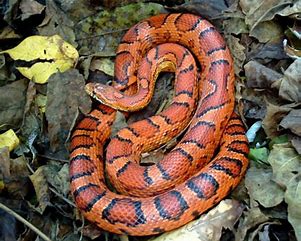
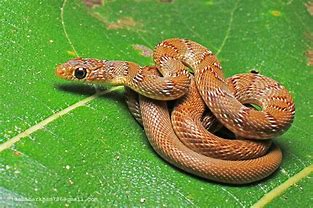
Venomous Snake and Poisonous Plant
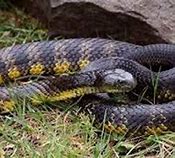
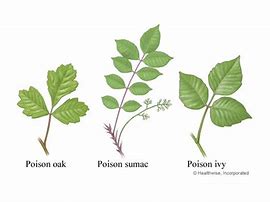
Pictures of Common Non-Venomous Snakes
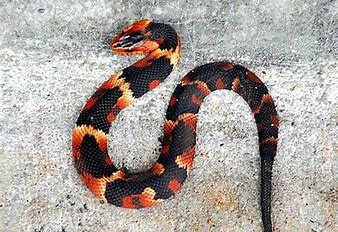
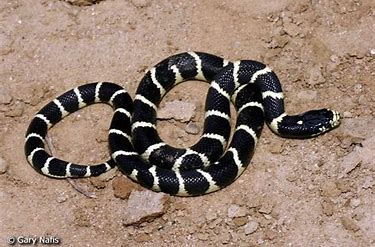
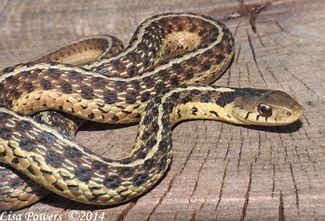
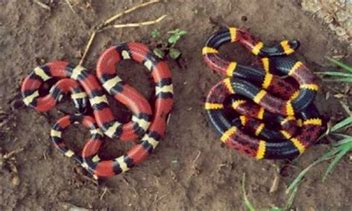
Venomous Snakes
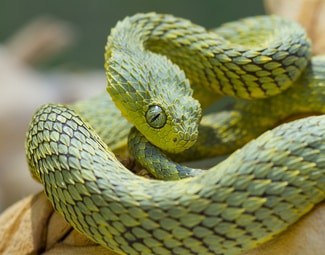
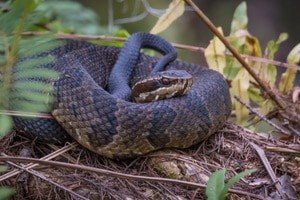
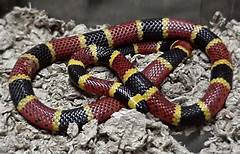
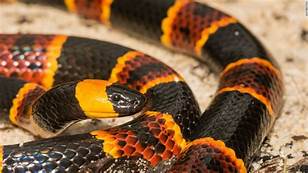
Snakes As Pets
I have been a breeder of reptiles, including snakes since the early seventies. I, at one point had over 200 snakes of different species. Most were used for breeding purposes as I sold to zoo's, pet stores, private collectors and individuals.
The one thing I learned was that they all have their own personalities. Some are always aggressive while others are gentle and easy to handle. Some can live up to twenty-years in the wild while others only make it days or weeks.
So, what ones made it to my top ten list:
- Red Rat Snake
- Ball Pythons
- Garter Snakes
- Western Hognose
- Gopher Snakes
- Milk Snakes
- Rosy Boa
- Rat Snakes (Black, Grey, Green, Yellow)
- California King Snake
- Red-Tail Boa
The Red Rat Snake
Also called the "Corn Snake" are colorful and mild mannered. They come in numerous color patters and morphs. They can live for over twenty-years and grow to four to six feet long. These snakes make a good "First Pet Snake."
The Ball Python
Also called the "Corn Snake" are colorful and mild mannered. They come in numerous color patters and morphs. They can live for over twenty-years and get up to five to six feet long. These snakes make a good "First Pet Snake."
The Garter Snake
These are another good starter snake. They are small and easily handled. They come in numerous patterns and areas. They grow to about three feet and can live up to ten years. They are alert and very fast.
The Western Hognose
This snake is small and non-aggressive and if you're not food will generally not bite. It fakes it's own death by rolling over and playing dead to avoid predators and humans. The snake has an upturned nose and will flatten it's head when threatened. They grow to about two feet and live approximately fifteen years. One note: They are considered "rear fanged." They use them to eat their favorite food, frogs and like. Contact with their saliva sometimes causes itching and localized redness and or swelling.
The Gopher Snake
Are a large bodied snake that can grow up to six feet and live for thirty years. Needs a large cage for growth and exercise. Its favorite prey are birds and small mammals.
The Milk Snakes
Can grow up to six feet and should also be housed alone except for mating. They might eat another snake in the cage like king snakes. Is considered an active snake. Has numerous colors and morph patterns.
The Rosy Boa
Is a small snake growing up to four feet. They can live for up to twenty-five years and are very very good at getting out of their cages. They love the high heat and sand for burrowing.
The Other Rat Snakes
There are several other rat snakes that make excellent pets. The yellow, black, gray and green rat snakes make up this group. Like the red rat snake they live for up to twenty years and top out around four feet to six feet.
The California King Snake
When young and first caught they can be a bit aggressive. Spend time handling them and as they get older they calm down a lot. There are numerous morphs and color patterns. Also making a good pet would be the Florida King Snake and the Chain King. As all king snakes are these eat other snakes as well as rodents and small mammals.
The Red-Tail Boa
These are one of the most popular larger snakes to keep as a pet. Adults can get up to ten feet and as large as thirteen feet for some females. The average weight is from twenty to thirty pounds with some record setters at sixty pounds. These snakes will attack when threatened. If you're looking for one as a pet purchase it from a breeder or pet shop as that one will not be as aggressive as a wild caught one. They need a large secure cage as these also will escape if allowed.
Pictures of Common Pet Snakes
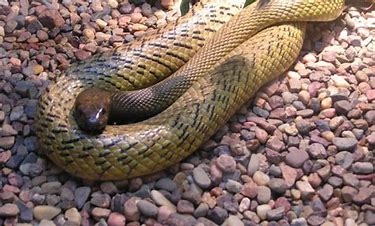
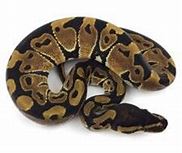

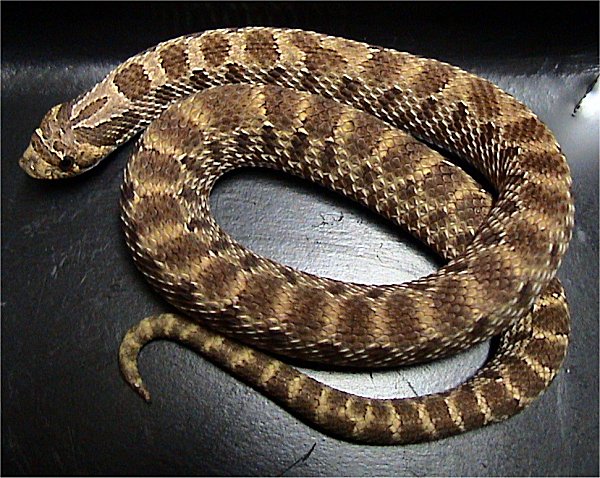
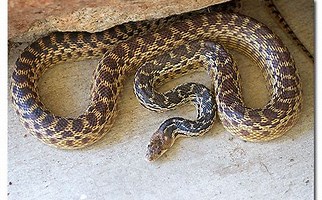
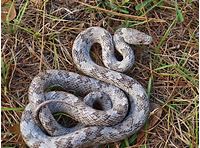
Pictures Of Common Pet Snakes
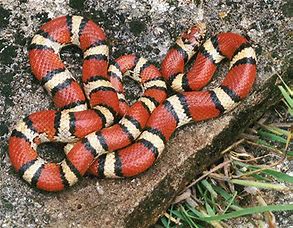
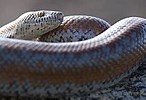
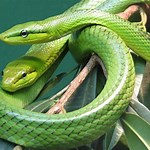
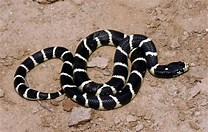
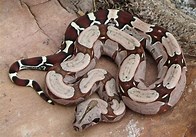
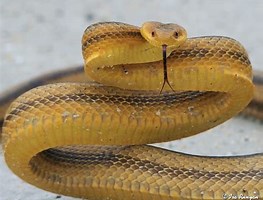
Taking Snakes From The Wild
My answer would have to be NO.
Snakes serve many purposes in the wild. They help control rodents (mice and rats) and other animals that wreck havoc on farmers and other people trying to make a living. If people aren't catching snakes and taking them from the wild, they're killing them because they're afraid of them.
Some reasons you should purchase a snake or reptile and not take them from the wild:
- Wild caught reptiles tend to be more aggressive as compared to domestic raised
- Captive bred eat better then wild caught. Some wild caught never eat and die
- You're putting a strain on the ecosystem
- Wild caught tend to be more unpredictable
When is it ok to remove wild snakes from the environment?
- Breeding purposes for endangered, threatened or protected species
- Relocation due to things like construction
- If you find an injured animal. Take it to a rehab facility. If its a baby leave it alone and report it
Venomous Snakes As Pets
I kept and bred venomous snakes for years. I specialized in Asian and African Cobras. Loved them. Even though they have the potential to kill a human they were fascinating animals.
I also had Cape Puff Adders, Monocle Cobras, Coral Snakes, Eastern and Western Diamondbacks, Pygmy Rattle Snakes, Canebreak Rattle Snakes, Water Moccasins (aka Cottonmouth), Copperheads, Mojave Rattlesnake and more.
Some of my favorites, not listed above are the Eastern Green Mamba, Boomslang, False Water Cobra and Eastern Gaboon Viper.
So, what are the top ten most venomous snakes in the world?
- Fierce Snake or Inland Taipan From Australia
- Eastern Brown Snake From Australia
- Coastal Taipan From Australia
- Beaked Sea Snake From Persian Gulf To Northern Australia
- Black Mamba From Africa
- Tiger Snake From Australia
- Philippine Spitting Cobra
- Vipers From India, Asia And The Middle East
- Common Krait Or Blue Krait From India
- Death Adder From Australia And New Guinea
The above list and order changes sometimes daily or weekly, depending upon what list or reference books you look at. The bottom line, all the above snakes are dangerous and deadly. As you can see, Australia has some of the most venomous snakes in the world.
The Fierce Snake Or Inland Taipan
This snake is considered the most poisonous snake in the world. Its timid and shy, rarely seen in the wild unless you're looking for it. This snake, when hunting, can bite up to seven times to try and subdue its prey. Its a small snake, rarely getting longer then five to six feet. Its diet includes small birds, mammals and rodents.
Eastern Brown Snake
This snake is also known as the Common Brown Snake and is considered the second most venomous snake in the world. This snake can grown up to seven feet. This is a fast moving, aggressive and bad tempered snake. Its prey is other small reptiles, birds and small rodents.
Coastal Taipan
This snake is considered the third most venomous snake in the world. It has the largest fangs among the Australian snakes. It has a large body and can grow up to six plus feet, while the average is more like three to four feet.
Beaked Sea Snake
This snake is a highly venomous sea snake species. It can grow up to five feet but the average length is more like three feet. Its favorite food is catfish and other fish.
Black Mamba
This is a highly aggressive and very fast moving snake. It is only one of a few that will actually go after or chase a human. There have been stories of this snake chasing down a person who ran it over with a car. This snake is capable of lifting the first third of its body off the ground to either bite or climb into trees to seek out its favorite prey, small birds. It will also eat small mammals and rodents. This is the fastest in the world and the longest in Africa. IT can grow in excess of seven to eight feet.
Tiger Snake
This highly venomous snake from Australia is actually protected there. Its favorite prey are small birds, mammals, lizards and frogs. This is a large bodied snake who average length is three and a half feet up to five feet. The record length in one area, Chapel Island is from six feet up to nine feet.
Philippines Spitting Cobra
This snake also has a stocky body and not only can inject venom through a bite, but can spit its venom with a high accuracy up to nine feet. It can grow up to three feet and when threatened will flatten its neck and hiss. It will generally avoid and flee from humans unless cornered or harassed.
Indian and Asian Vipers
There are a large number of different species which make up this group. They include Indian Green Viper, Bamboo Viper, Asian Palm Vipers, Lanceheads and the White Lipped Viper. These are only a few of the more than forty or so listed.
Common Krait or Blue Krait
Also called the Indian Krait or Blue Krait is a highly neuro-toxic snake found in the rural areas and jungle. It is a slender snake that is slow and sluggish during the day and fast and active during the night. It grows up to about five feet.
Death Adder
This is also one of the most poisonous snakes in the world found in Australia and New Guinea, and some of the local islands. It buries itself in the sand or leaves and uses its tail as bait by wiggling it to attract small mammals, rodents and lizards. It has the faster strike of all snakes throughout the world. It is highly toxic. It grows up to about four feet.
The Four Big Indian Venomous Snakes:
- The Indian Cobra (Naja Naja) also called The Monocle Cobra
- The Russell's Viper (Daboi Russelli)
- The Saw Scaled Viper (Echis Carinatus)
- The King Cobra (Opiophagus Hannah)
These four snakes and some of the most dangerous in India. THe "King" is a shy snake and will often avoid human contact. Its one of a few snakes that will guard its young. The Russell's Viper is responsible for most of the bites (fatal) in India. This snake will not run and will attack if threatened. The Monocle Cobra, when its raises and flattens it's head has what looks like a double monocle on its back. The Saw Scaled Viper is another highly venomous snake that sounds much like a rattlesnake when threatened. This comes from rubbing its scales together to make the noise.
Pictures of Above Venomous Snakes

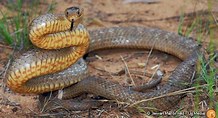
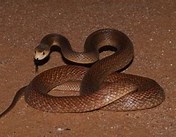
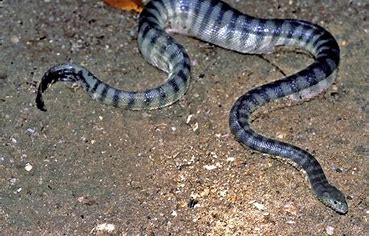
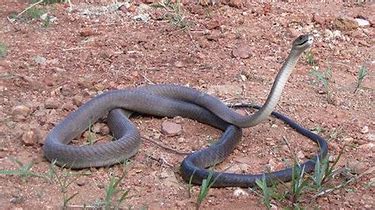
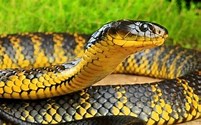
Pictures Of Above Venomous Snakes
